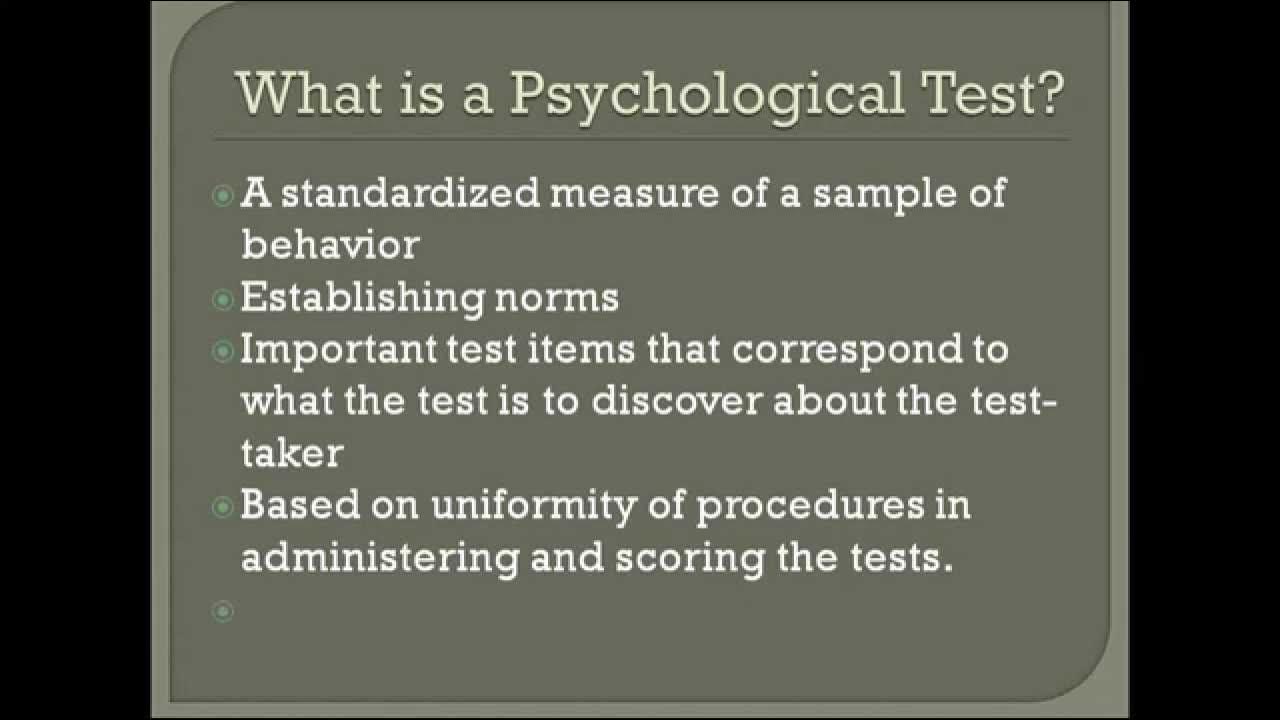Part-2 Test-retest reliability
Summary
TLDRTest-retest reliability is a method for evaluating the consistency of a test over time by correlating scores from two separate administrations. It is particularly useful for assessing stable psychological traits, like personality, which do not change quickly. The process involves collecting data at two different times and checking for high positive correlations between the two sets of scores. The ideal time between administrations is between 1 to 6 weeks, as this minimizes both practice effects (where participants remember previous answers) and time effects (where changes in the participants’ lives may influence responses).
Takeaways
- 😀 Test-retest reliability estimates the consistency of test scores obtained from the same participants on two different occasions.
- 😀 Unlike internal consistency reliability, test-retest requires data collection from the same group of people at two separate times.
- 😀 For test-retest reliability, participants answer the same test twice, typically separated by a few weeks, and their scores are correlated.
- 😀 A high positive correlation between the two sets of scores indicates strong test-retest reliability, showing the test's stability over time.
- 😀 Test-retest reliability is appropriate for constructs that are stable over time, such as personality traits, which generally don't change quickly.
- 😀 Test-retest reliability should not be used for fluctuating characteristics like emotional states, which can vary significantly over time.
- 😀 The recommended duration between test administrations should be between 1 to 6 weeks to minimize both practice and time effects.
- 😀 Practice effects occur when participants remember their previous answers and try to match them, impacting the reliability of the test.
- 😀 Time effects can occur when too much time passes between tests, potentially causing external factors like life experiences to influence responses.
- 😀 To avoid both practice and time effects, the retest interval should ideally be 2 to 4 weeks, balancing both stability and accuracy in measuring reliability.
- 😀 Carefully managing the duration between test administrations is crucial for ensuring valid and reliable results when using test-retest reliability.
Q & A
What is test-retest reliability?
-Test-retest reliability is a measure of the reliability of a test obtained by correlating the scores from the same individuals on two different administrations of the same test.
How is test-retest reliability different from internal consistency reliability?
-Test-retest reliability requires two administrations of the same test to the same individuals, whereas internal consistency reliability only requires data from one group at one time. Internal consistency measures how well the items on a test measure the same construct.
Why is test-retest reliability important?
-Test-retest reliability is important because it helps evaluate whether a test produces stable and consistent results over time, which is crucial for constructs that are meant to be stable, such as personality traits.
What is the key factor that affects the duration between the two test administrations in test-retest reliability?
-The key factor is to balance practice effects and time effects. The duration should not be too short to avoid practice effects, where participants remember previous answers, nor too long to avoid time effects, where external factors could influence the participants' responses.
What are practice effects in the context of test-retest reliability?
-Practice effects occur when participants remember their responses from the first test administration and try to replicate them during the second test, leading to biased results that do not reflect their true psychological state.
What are time effects in the context of test-retest reliability?
-Time effects refer to the changes that can occur over time, such as the participants experiencing new events, gaining new knowledge, or undergoing personal changes, which could influence their responses during the second administration of the test.
What is the recommended duration between the first and second administrations in test-retest reliability?
-The recommended duration is between one to six weeks. This time frame helps to minimize both practice effects and time effects, ensuring a balanced assessment of test-retest reliability.
Why is it not recommended to administer the second test too soon after the first administration?
-If the second test is administered too soon, participants may remember their previous answers, which could lead to practice effects. This would not provide an accurate reflection of their true psychological state.
Can test-retest reliability be used for constructs that fluctuate over time?
-No, test-retest reliability is not suitable for constructs that fluctuate over time, such as personality states, because they are influenced by environmental factors and may change significantly between the first and second administration of the test.
Why is test-retest reliability suitable for measuring personality traits?
-Personality traits are considered relatively stable over time, making them suitable for test-retest reliability. Since personality traits typically do not change rapidly, they are ideal for assessing consistency over time using this method.
Outlines

هذا القسم متوفر فقط للمشتركين. يرجى الترقية للوصول إلى هذه الميزة.
قم بالترقية الآنMindmap

هذا القسم متوفر فقط للمشتركين. يرجى الترقية للوصول إلى هذه الميزة.
قم بالترقية الآنKeywords

هذا القسم متوفر فقط للمشتركين. يرجى الترقية للوصول إلى هذه الميزة.
قم بالترقية الآنHighlights

هذا القسم متوفر فقط للمشتركين. يرجى الترقية للوصول إلى هذه الميزة.
قم بالترقية الآنTranscripts

هذا القسم متوفر فقط للمشتركين. يرجى الترقية للوصول إلى هذه الميزة.
قم بالترقية الآن5.0 / 5 (0 votes)






